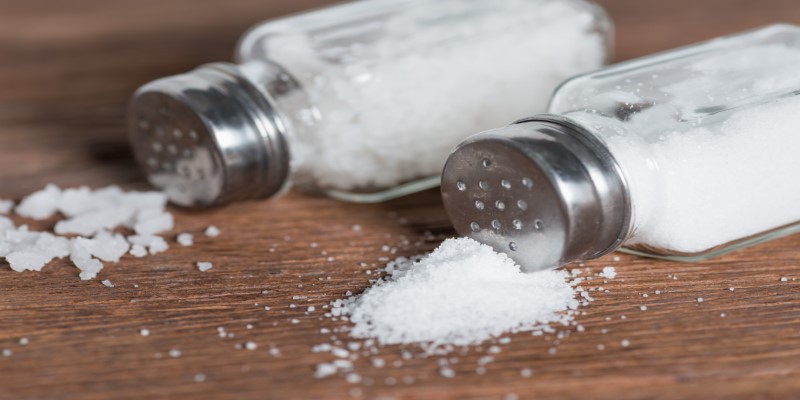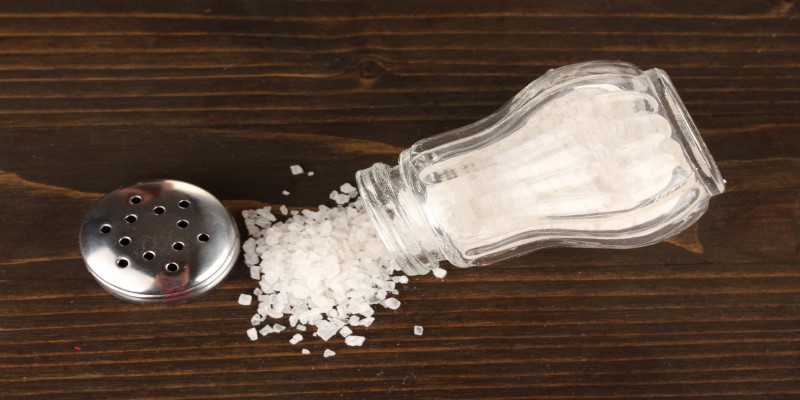Sodium Bicarbonate vs Table Salt: Unveiling the Contrasts Between them
Mar 13, 2024 By Madison Evans
Sodium bicarbonate and table salt are staples in every kitchen pantry, often used interchangeably in cooking and baking. Despite their similar appearance, these two white powders have vastly different chemical compositions and purposes. This article will delve into the nuanced disparities between sodium bicarbonate and table salt, shedding light on their distinctive properties, uses, and health implications.
From their chemical makeup to culinary applications, understanding these differences is crucial for creating delicious dishes while ensuring optimal health and safety in the kitchen. So, let's embark on a journey to unravel the mysteries behind sodium bicarbonate and table salt, discovering the unique roles each plays in the culinary world and beyond.
Sodium Bicarbonate:
Sodium bicarbonate, commonly known as baking soda, is a versatile compound with numerous household and culinary applications. Its chemical formula, NaHCO3, reveals its composition of sodium, hydrogen, carbon, and oxygen atoms. Its alkaline nature sets sodium bicarbonate apart, making it a potent leavening agent.
When sodium bicarbonate interacts with acidic ingredients, it undergoes a chemical reaction, producing carbon dioxide gas. This gas formation is the key to creating light and fluffy textures in baked goods like cakes, cookies, and bread. Its ability to generate bubbles within the dough structure makes it indispensable in baking, ensuring your culinary creations achieve perfection.
Table Salt:
Table salt, scientifically known as sodium chloride (NaCl), contrasts sodium bicarbonate with its crystalline structure and distinct culinary roles. Primarily celebrated as a seasoning, it elevates flavor profiles and is a potent preservative. Unlike sodium bicarbonate's leavening prowess, table salt extends the shelf life of various edibles by inhibiting microbial growth.
The secret behind its unmistakable salty taste lies in chloride ions that stimulate taste receptors on the tongue, creating a culinary experience that goes beyond mere seasoning. So, while sodium bicarbonate lifts dough, table salt enhances taste and ensures your culinary creations stay fresher for longer, making it an indispensable ingredient in every kitchen.
Differences Between Sodium Bicarbonate and Table Salt
The differences between table salt and sodium bicarbonate are vast, spanning composition, culinary applications, health implications, and environmental impact.
Composition:
Regarding composition, sodium bicarbonate and table salt unveil their distinct chemical identities. Sodium bicarbonate, with the formula NaHCO3, showcases a combination of sodium ions (Na+) and bicarbonate ions (HCO3-), imparting its alkaline nature.
In contrast, table salt, scientifically named sodium chloride (NaCl), is a crystalline compound formed by an equal partnership of sodium ions (Na+) and chloride ions (Cl-). This fundamental difference in chemical makeup lays the foundation for their diverse culinary applications and purposes in the kitchen. Understanding these compositional disparities is pivotal for grasping the unique roles each plays in the world of cooking and baking.
Physical Appearance:
Regarding physical appearance, sodium bicarbonate and table salt exhibit notable differences. Sodium bicarbonate typically appears as a fine, white crystalline powder, boasting a texture conducive to blending into batters and doughs.

Conversely, table salt presents itself in various forms, ranging from fine granules to larger crystals, offering versatility in culinary applications. Whether finely ground for table use or coarsely textured for specific recipes, the distinct physical characteristics of these ingredients contribute to their respective roles in cooking and baking. Understanding their appearances aids in proper utilization, ensuring culinary success in every dish.
Chemical Reactions:
A notable disparity between sodium bicarbonate and table salt lies in their behavior during chemical reactions. Sodium bicarbonate engages in leavening reactions, releasing carbon dioxide gas when combined with acids. This process is essential for dough rising in baking, giving bread and pastries their airy texture.
Conversely, table salt doesn't contribute to leavening but dissolves in water, breaking down into sodium and chloride ions. These ions play vital roles in cellular function and electrolyte balance within the body, showcasing table salt's significance beyond culinary applications. Understanding these contrasting reactions elucidates the unique contributions of sodium bicarbonate and table salt in both culinary and physiological realms.
Culinary Uses:
In the culinary realm, sodium bicarbonate and table salt serve distinct purposes. Sodium bicarbonate is primarily employed as a leavening agent in baking recipes, where its ability to produce carbon dioxide gas results in light and airy textures. Additionally, sodium bicarbonate can tenderize meat, neutralize acidic flavors in dishes, and act as a cleaning agent due to its abrasive properties.
Conversely, table salt is valued for enhancing flavor and preserving food. It is commonly used to season savory dishes, imparting a salty taste that heightens the culinary experience. Furthermore, table salt is utilized in brining and curing processes to preserve meats and extend their shelf life. Its hygroscopic nature also makes it an effective desiccant for preserving food freshness.
Health Implications:
While sodium bicarbonate and table salt are indispensable in cooking and food preservation, moderation is vital to safeguarding health. Excessive sodium intake, prevalent in table salt, is associated with hypertension, cardiovascular ailments, and kidney issues.
Conversely, caution is advised with sodium bicarbonate supplements, as they can trigger metabolic alkalosis and disrupt electrolyte balance when consumed excessively. Prioritizing balanced dietary choices and mindful usage of these ingredients is crucial for maintaining overall well-being while relishing their culinary pleasures.

Environmental Impact:
Sodium bicarbonate, being naturally occurring and non-toxic, poses minimal environmental risk. Conversely, table salt, particularly in large quantities for road de-icing, can lead to soil salinity, water pollution, and harm to aquatic life. Mindful usage and exploring eco-friendly alternatives are essential to mitigate table salt's environmental impact.
Conclusion:
In conclusion, sodium bicarbonate and table salt are ubiquitous ingredients in the culinary world, each possessing unique properties and applications. While sodium bicarbonate is a leavening agent in baking and offers various household uses, table salt enhances flavor, preserves food, and regulates cellular function.
Understanding the differences between these two compounds is crucial for maximizing their culinary potential while promoting balanced dietary habits. Home cooks can elevate their culinary creations and foster healthier eating habits by harnessing the distinct characteristics of sodium bicarbonate and table salt.







